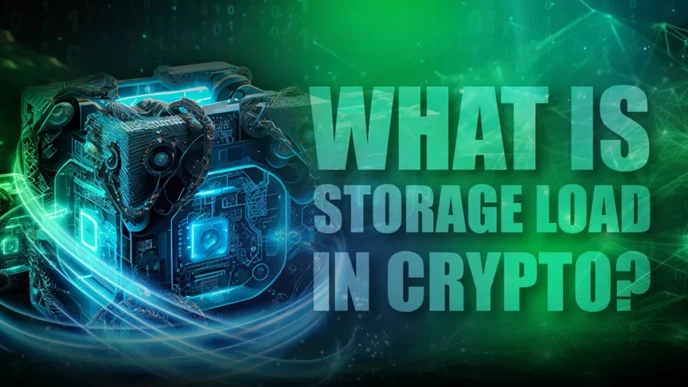What is Storage Load in Crypto? (S-Load, Gas Fee Implications)

Blockchain technology is built on the foundation of distributed ledger systems that record and store transactions in a secure and immutable manner.
However, as the number of transactions on the blockchain network grows, so does the amount of data that needs to be stored.
This increase in data storage requirements is what is referred to as "storage load."
What is Storage Load?
Storage load refers to the amount of data that needs to be stored on a blockchain network.
Every transaction that occurs on the blockchain network generates data that needs to be stored on the network permanently.
This data is stored in blocks, which are added to the blockchain in a sequential and immutable manner.
How Storage Load Affects Blockchain
The impact of storage load on the blockchain network can be significant.
As more data is added to the blockchain, the size of the blockchain grows, which can lead to slower transaction processing times and increased storage requirements for network participants.
Factors that Affect S Load
Several factors can affect the S Load on a blockchain network. These include:
- Transaction volume: The more transactions that occur on the network, the more data needs to be stored.
- Block size: The larger the size of the blocks on the blockchain, the more data can be stored in each block.
- Network participants: The more nodes that are participating in the network, the more copies of the blockchain need to be stored, increasing storage requirements.
Some smart contracts has a higher S-load as compared to others which contributes to higher gas fees to add them to the blockchain.
S Load and Scalability
Scalability is a critical consideration for any blockchain network.
As the number of transactions on the network grows, the storage requirements also increase, which can impact the scalability of the network.
To address this issue, some blockchain networks have implemented solutions such as sharding, which allows for the partitioning of the blockchain to improve scalability.

PulseChain To Solves the S Load Problem
Richard Heart cited that the primary reason he wanted to fork Ethereum and create PulseChain was to reduce gas fees.
The staking function of Hex, his first project, had an extremely high S-Load, making the gas fees unusable for smaller users.
Join The Leading Crypto Channel
JOINDisclaimer:Please note that nothing on this website constitutes financial advice. Whilst every effort has been made to ensure that the information provided on this website is accurate, individuals must not rely on this information to make a financial or investment decision. Before making any decision, we strongly recommend you consult a qualified professional who should take into account your specific investment objectives, financial situation and individual needs.

Connor
Connor is a US-based digital marketer and writer. He has a diverse military and academic background, but developed a passion over the years for blockchain and DeFi because of their potential to provide censorship resistance and financial freedom. Connor is dedicated to educating and inspiring others in the space, and is an active member and investor in the Ethereum, Hex, and PulseChain communities.

Development
Knowledge
Subscribe To Newsletter
Stay up-to-date with all the latest news about
Liquid Loans, Fetch Oracle and more.
Copyright © 2024 Crave Management.
All Rights Reserved.

The LL Librarian
Your Genius Liquid Loans Knowledge Assistant




